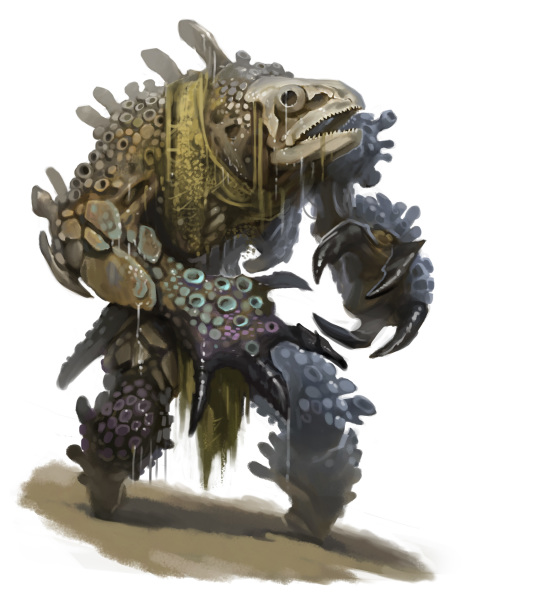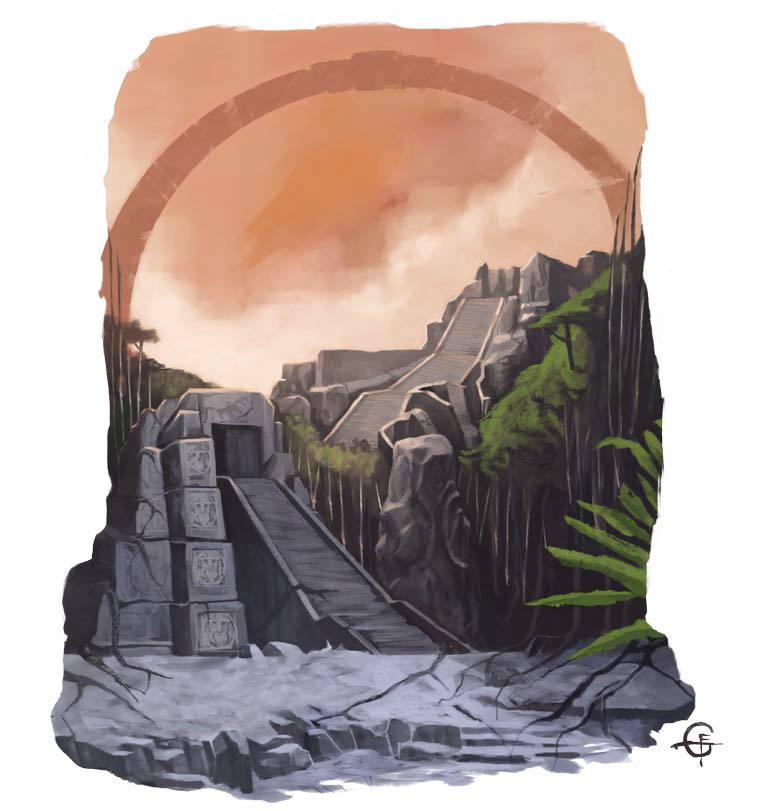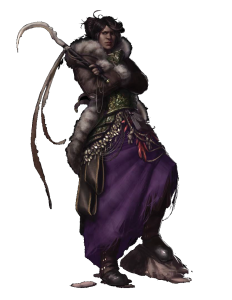I was in my FLGS (Friendly Local Gaming Store) the other day and saw the printed copy of the Pathfinder 2e playtest. Paul had been talking about running a one-shot for us so I decided to go ahead and pick it up.
I’m a long time Pathfinder player (as long as you can get, I migrated from Dragon/Dungeon to Paizo APs in 3.5 to Pathfinder Beta to Pathfinder as it happened). I’ve been a superscriber for all that time so I have every Player’s Companion and rulebook and everything.
As a result I wasn’t chomping at the bit to look at 2e – I have more Pathfinder stuff than I can probably use in my lifetime, and my gaming group is mainly playing other games nowadays, but this prompted me to pick it up and read through it.
Overall it’s good. It’s different than Pathfinder/3.5e. I’m not sure how many of the changes are really better or worse instead of just being different, however. More on that after the details.
The book is beautiful, it’s full color and pro layout and no typos; better than most non-playtest RPGs (and definitely levelled up over the initial printed Pathfinder Beta I still have a copy of).
Overview
Intro
It starts with the usual RPG intro, which is fine. They go a little overboard on the nearly page worth of SJW-speak in the beginning. I want gaming to be inclusive and fun for all too, but they drone on about “safe space” and how GMs should be “pay[ing] careful attention to players’ body language” to police anyone being “uncomfortable.” Yes, job #1 of a GM is to carefully monitor everyone’s emotional state and make sure everything’s light and non-challenging in 2018 I guess. But, whatever, the book’s 432 pages long already why not pad it out.
Basic Concepts
The basic concepts are the usual, and you’ll generally get AC, HP, and so on. You get 3 actions (and a reaction) per round from general inflation, I wish it was more like 1e/2e – do one thing and the action will get back to you quickly, instead of doing 4 things and then waiting an hour for your next turn. Though there’s one real problem I had – the new icons to indicate action types. It smacks of trying to IP-protect your trade dress for the sake of it, and they are not more concise than just using a letter or whatever. For 2 actions I need two little baseball diamonds instead of a 2? Making a character sheet or spell cards gets to be a non-plaintext exercise now? Boo.
Anyway, then important concept, Proficiency Modifier! Like D&D, you have a proficiency modifier that applies to everything (weapons, skills, etc.) that is based on your level. It can be slightly less than your level or slightly more than your level if you are untrained or master or legendary.
In the book, untrained is level-2 and legendary is level+3. That is terrible and let me explain why. It means there’s only a 5 point spread, on a d20 roll, between the most hapless and the most skilled of a given level. This means that when faced with the nearly ubiquitous adventure option of “do some skill challenge, or fight them,” it’s a sucker bet to try to beat them at the skill challenge because a 5 point spread on d20 is very, very failable, where if you differ enough levels you’re basically guaranteed to beat them in the fight because of how many things stack onto making you better and it’s effectively a complex skill check of many many rolls and not just one.
But all is not lost! Paizo listens to their playtesters, and in the current rule update, they change this so unskilled is level -4. It still means “trained” and “legendary” is only a 3 point spread though, which isn’t great, but it’s nice to see it iterating in the right direction. It does mean “mommy taught me the guitar” can beat Robert Johnson 34% of the time in a straight roll-off, which kinda sucks. At least untrained at -4 only beats him… 20% of the time? That’s not excellent.
Character Creation
Then you get a summary of character creation. It’s straightforward, though they hide how you determine hit points in the middle of a long “Apply Your Class” section and I went past it and it took me a while to find it – I’d think that would at least merit some bold or a header or a sidebar or something; it’s more complicated than previous because you have an ancestry set of hit points and then a class set of hit points you add together. (And it’s here instead of in the definition of Hit Points with a header in the previous section why?) There’s a lot of formulas like that that are only explained in this section (AC calculation too) that really should be set out to look like
AC = 10 + Dex modifier (up to armor cap) + armor proficiency modifier + armor item bonus to AC + other bonuses/penalties
instead of just being text inline which is what they are. You’re Mathfinder, own it.
Alignment is skimmed over pretty much in passing.
Ability Scores
Next we do ability score generation. It’s the usual 6 D&D stats, but the generation is a little tricky. You start with 10 and then do a bunch of iterations of adding ancestry ability boosts (boost = +2), two background ability boosts, four free ones, a class one… But you can’t double up in a given iteration, but you can stack them across iterations. OK, fair enough, though I suspect we’ll always be seeing the same Backgrounds for the same classes since it’s the only way to min-max your stats to 18. Or you can roll if you’re a real man.
Ancestries and Backgrounds
Next we do the races, except it’s racist to call them races so they’re Ancestries I guess? You get the venerable Dwarf/Elf/Gnome/Halfling/Human and can do half-orcs and half-elves as variant humans. All pretty cool, and instead of a standard set of abilities there’s “ancestry feats” you can choose from both at start and then you get more every 4 levels. Not sure how you explain “suddenly I can do that thing that I learned growing up I guess” story wise, but eh, everyone likes more powers.
Only humans have ethnicities, which is weird because in Golarion there’s elf ethnicities and stuff.
And the big bad in this chapter is goblins as a playable race.
Look man, I’ve played all the goblin modules too and I love them. The goblins are some of Pathfinder’s most recognizable IP. But in Golarion, goblins are crazed spazzes that are in no way compatible with other people. And people already use gnomes and sometimes halflings if they want to play a little spaz. By them being a core race instead of just in some later race guide, that means 1/6 of characters, especially in Pathfinder Society play, get to be disruptive illiterate arsonists. Great. Needs to be pulled and put into some later more optional thing, even if it’s the first AP, with some warning text.
Backgrounds
Then we have two pages of Backgrounds, which give ability boosts and skills usually. Acolyte, Criminal, Warrior, and so on. (I wonder which map to which classes?) There’s not that many but I assume they’ll get the shit splatbooked out of them eventually.
Languages
The next chapter is Languages, which generally works like you’d expect except for a weirdly complicated full half page on sign language (every language you choose normal or signed and if signed you get the Read Lips feat for free and blah blah see page 301)… It also weirdly assumes that every language/race has sign language and that they’re tied to languages? So gnoll sign language is different from celestial sign language? Plus IRL sign language wasn’t developed until post-Renaissance so it’s all just kind of weird and overwrought. Like, the sign language section is larger than the entire alignment section.
Classes
Classes. The first class is Alchemist because they’re alphabetical and it really threw me, I started reading it and my reaction was “what the hell is this?!?” I had to start looking up bunches of other game concepts (“Resonance?”) and it was super confusing. I punted and went forward to Fighter to figure out the game. Turns out they published a massive revision to the Alchemist in the errata because I guess that was a common reaction.
Anyway, the classes go to a pick-and-choose set of feats, you know, like every video game skill tree. I approve. So many archetypes in 1e were just to basically move around things you didn’t really want for things you did, so going to “pick a class feat” is more elegant.
But I speak too soon. While most items are turned into class feats, there is still a level advancement table with some things built in (Barbarian gets rage and totem at level 1, “juggernaut” at level 7, and so on). It’s not clear why these aren’t just class feats with that level as their level restriction, so you could take some other thing at 7 and then juggernaut at 8 if that floated your boat.
It’s the normal core classes plus alchemist, a solid list with no surprises. Without actually playtesting them it’s hard to tell, but they seem to generally do what they did in previous editions.
Skills
They combined skills into a semi short list of 17 skills. They are still complicated because they basically pasted the rules for each more granular skill under them, so in Acrobatics you get a long ass thing about Balance, Escape, and the 5 other uses each of which has its own ruleset.
You don’t have skill points any more, it’s just those untrained/trained/expert/master/legendary levels. Everyone gets skill advances that boost your skill ranks pretty frequently. Even the wizard, which starts with 2 + INT skills, gets one skill every 2 levels so can have 11/17 of the skills (barring mastery, but each level of mastery only gets you +1, so they’re a poor investment).
Each skill, like many of the feats in the class section, have these little “Traits” associated with them. Some are defined here, like Secret. Some are off in Appendix 1 in the back; I’m not sure how you’re supposed to know that.
The organization of this book starts to fall down about this point. There’s a lot of inconsistency. Take classes and their class feats. OK, those are described under the class entries, not lumped into the general feats chapter. But then “powers”, like the monk’s ki strike, aren’t in the class section, they are lumped into the Spells section!
I know in a complex game you can’t always have it where you read the definition of something before you have rules using that something, but at least have a consistent design philosophy of where you’re going to squirrel things away. Do class things go under the class or sorted into other categories? Do traits and such get defined in the relevant section or in the back? On p.144 it explains what a Secret skill check is. Secret is in the traits section in the back but there it just says see p.293. Where it has the exact same text as on p.144 duplicated. What?!?
Anyway, organizational gripes aside – they’re skills. They let you do the normal panoply of stuff you want to do in D&D/Pathfinder.
Feats
Feats feats feats! Only 13 pages of them. They are almost all skill feats and then some general feats, there’s no like metamagic or combat feats, which are just in the classes I reckon.
Equipment
They go to the silver standard, which I like. Gold is just for magic items and super expensive stuff, normal folks use silver for conventional expenses.
Armor is mostly like armor used to be, although with AC and touch AC (TAC) stats. Shields are weirder and more complicated, you have to use an action to get their AC bonus.
Weapons, predictably, are like they used to be except we love traits now so every single weapon has 1-6 traits on it. Axes sweep, mauls shove, bows are deadly and propulsive… Entertainingly they define all the traits but not any of the weapons, I guess if you don’t know what a main-gauche or guisarme is, your hapless noob ass can google it? Maybe that’ll be added in the final book.
Gear is gear, but encumbrance has changed to a more abstract Bulk system instead of weight, with all the complicated junk about well this is negligible and this is Light so 10 of those become 1 Bulk and so on. Not that anyone uses encumbrance anyway.
There’s item qualities, like “masterwork” was but they can go up to +3 if you spend about x10 more money for each increment.
Spells
We’ll pick this up next time in a Part 2! I’ll discuss spells and then the actual gameplay rules, which are hidden behind everything else. And then GMing and treasure if I reach it.








 War Machine, Part II” – Cannibals apparently infest the crypt, which in addition to normal crypt dangers keeps the pirates on their toes – and losing some, to the grinding bear traps all over the area.
War Machine, Part II” – Cannibals apparently infest the crypt, which in addition to normal crypt dangers keeps the pirates on their toes – and losing some, to the grinding bear traps all over the area.